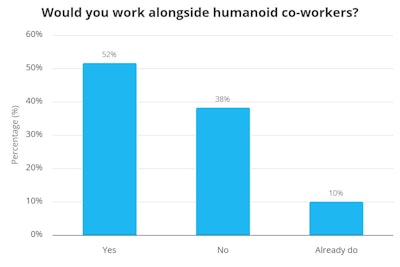In a recent flash poll conducted by Industrial Media, we asked manufacturing and engineering professionals, “Will manufacturers ever close the skills gap?”
Within 24 hours, the poll received 173 responses, and a majority, comprising some 63% (93 respondents), said manufacturers will never close the skills gap. The remaining 37% believe manufacturers will be able to achieve the steep feat.
As of June 2025, the industry currently had 415,000 job openings, down from 425,000 in May, according to the National Association of Manufacturers, as reported by the Bureau of Labor Statistics.
So, how can manufacturers fill the labor void? Automation could play a role. Since the beginning of the Industrial Revolution, workers have feared being replaced by machinery.
In a poll conducted last week, Industrial Media asked readers, “Will we ever reach a time when the U.S. manufacturing workforce is completely replaced by automation?”
An overwhelming number of respondents, some 89% said it will never happen.

However, one alternative could be augmenting the workforce with robotics, including collaborative robots and humanoid workers.
In a subsequent poll, Industrial Media asked the industry, “Would you work alongside humanoid co-workers?”
A slim majority, about 56% said they would work alongside humanoid robots, while about 35% said they would refuse. A small sample, about 10%, said they already do.

While it seems simple: Buy a robot, fill a job. Part of the problem is keeping up with demand.
According to a previous report in Industrial Equipment News (IEN) magazine, Ville Lehtonen, vice president of product at Realtime Robotics, said, “The industry is selling very few robots and still not keeping up with demand.”
Lehtonen says there are 270 robots for every 10,000 manufacturing workers—and most are in the automotive industry. Realtime Robotics designs planning software that uses AI to optimize industrial robot paths.
The International Federation of Robotics (IFR) said 381,964 industrial robots were in use on U.S. factory floors in 2023, about a 10% increase from 2022. The report says annual installations reached 37,587 units in 2023. Although it was a 5% decrease, it was still the third-best result in U.S. history.
“We need to democratize robotics,” Lehtonen said. “We should be selling 50 million robots instead of 50,000.”


